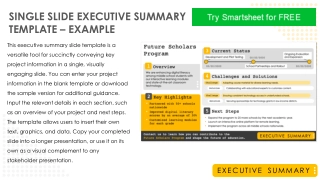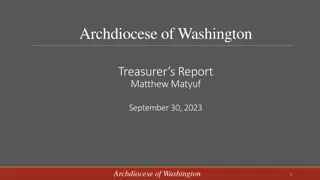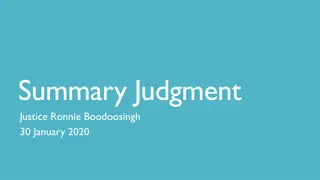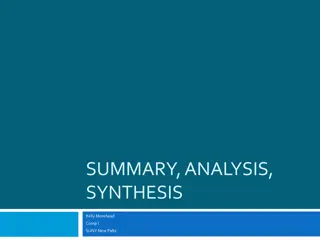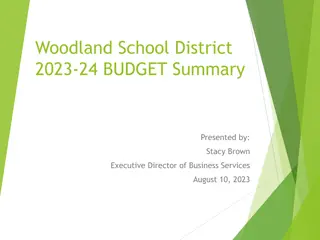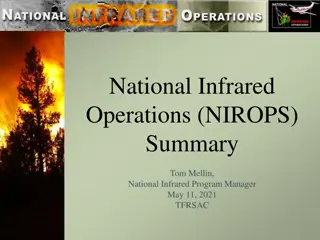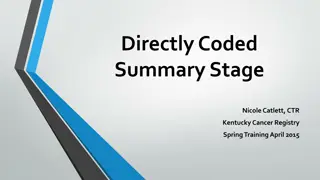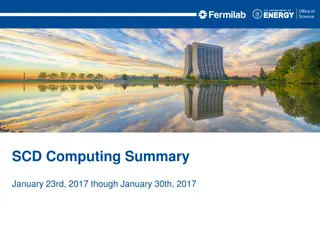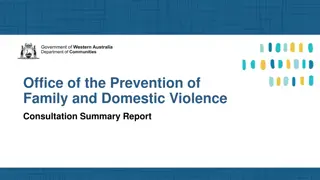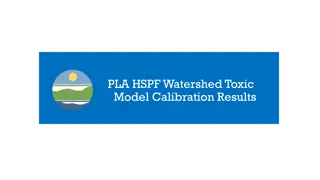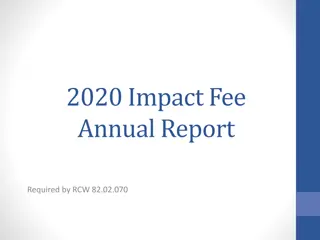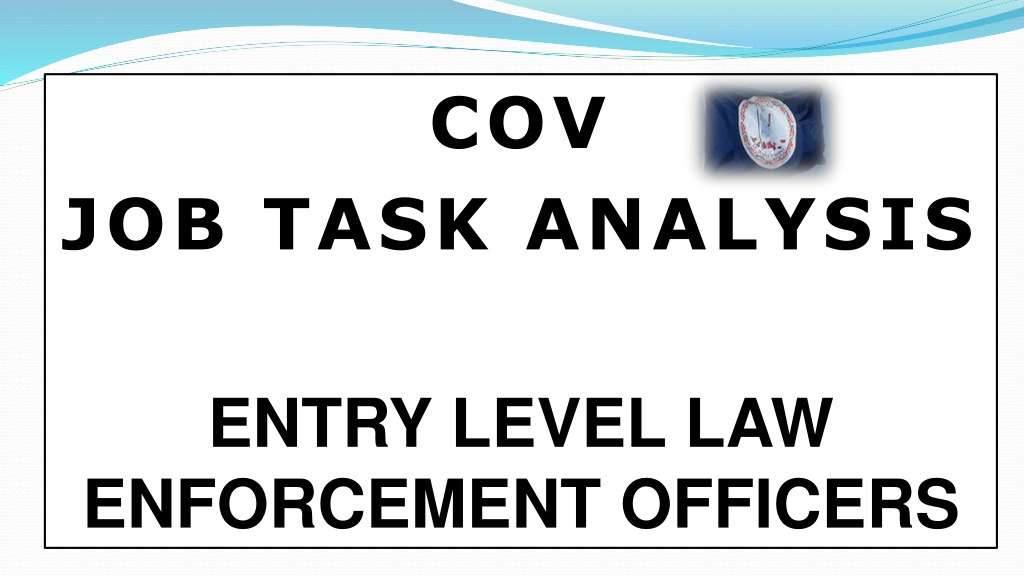
Entry Level Law Enforcement Officers Task Analysis
Explore the task analysis for entry-level law enforcement officers, including various committees, content items, frequency scales, consequences of inadequate performance, and when tasks should be learned and achieved.
Download Presentation

Please find below an Image/Link to download the presentation.
The content on the website is provided AS IS for your information and personal use only. It may not be sold, licensed, or shared on other websites without obtaining consent from the author. If you encounter any issues during the download, it is possible that the publisher has removed the file from their server.
You are allowed to download the files provided on this website for personal or commercial use, subject to the condition that they are used lawfully. All files are the property of their respective owners.
The content on the website is provided AS IS for your information and personal use only. It may not be sold, licensed, or shared on other websites without obtaining consent from the author.
E N D
Presentation Transcript
COV JOB TASK ANALYSIS ENTRY LEVEL LAW ENFORCEMENT OFFICERS
PROJECT TECHNICAL COMMITTEE Capt. Todd Wessells - Accomack CO SO Deputy Alfonzo Seward - Brunswick CO SO Capt. Roger Jamerson - Buckingham CO SO Lt. Jeff Jefferies - Chesapeake PD Capt. Tommy Merricks - Danville PD Sgt. Steve Rau - Falls Church PD Sgt. Chris Deavers - Front Royal PD Lt. Brian Coleman - Hampton PD Capt. Judson Flagg - Hanover County SO Capt. Michael Snawder - Richmond PD Lt. Dave Cooper Virginia State Police Lt. Brian Brown -Staunton PD Major Mike Shawver -Tazewell County SO Major Mac Babb - Virginia Tech Univ. PD Chief Rick Arnold - Wytheville PD
BASIC COURSE REVIEW COMMITTEE Lt. Kenneth Burnett - Henrico County PD MPO Frankie Filippone - Virginia Beach PD Lois Kinch-JTA Coordinator-DCJS Field Rep Robert McHale - DCJS
TASK ANALYSIS CONTENT 123 Items related to Basic Patrol Function 6 Items related to Ethics 98 Items related to Investigations 77 Items related to Legal Issues/Arrest Procedures Items related to First Aid and Emergency Assistance 66 Items related to Motor Vehicle Enforcement 27 Items related to Use of Force 25 Items related to Human Relations 28 Items related to Emergency Vehicle Operation 10 Items related to Homeland Security 9 Items related to Report Writing 8 Items related to Civil Disorder 150 Items related to Equipment 25 Items related to Reading 45 Items related to Physical Skills 50 Items related to Physical Abilities 24 Items related to Physical Exertion 42
FREQUENCY SCALE (FREQ) During the last twelve months I have performed this task 1 2 3 4 5 6 7 8 9 Several times per week Have done this task but not in the past year Several times per month More than once per day Once a year Several Times Monthly Weekly Daily
CONSEQUENCES OF INADEQUATE PERFORMANCE SCALE (CIP) The Consequences of Inadequate Performance for this task are: 1 2 3 4 5 6 7 Not Very Serious Fairly Serious Very Serious Extremely Serious Minimal Serious Disastrous
WHEN LEARNED SCALE (WL) When should this task be learned and competence achieved? 1 2 3 4 Some Basic Academy exposure necessary, but competence is achieved on the job Competence must be achieved prior to graduation from Basic Academy In specialized training beyond Basic Academy On the Job
TABLE 1 SAMPLING PLAN ANALYSIS Unit of Analysis Number of Persons 5 yrs 599 Number of Supervisors 106 Campus 4.5% 6.3% Airport 228 1.7% 25 1.5% State Agencies / VSP GIF 1,568 11.7% 126 7.5% Small PD <15 509 3.8% 146 8.7% Medium PD 5-100 1,564 11.7% 290 17.3% Large PD >100 4,267 32.9% 409 24.4% Small SO <30 973 7.3% 100 5.9% Medium SO 30-100 1,644 12.3% 170 10.1% Large SO >100 2,003 15.0% 310 18.5% 13,355 100.9 1,676 100.2 Source: Jan 2018 DCJS Reports and includes all agencies.
TABLE 2 DCJS JTA SAMPLING PLAN (RANDOM STRATIFIED) Officers* N=30 Supervisors* Airport Police All 3.6% All N=27 2.2% Campus Police E2nd N=63 7.6% All N=84 6.8% Small SO <30 E2nd N=80 9.7% All N=89 7.2% Medium SO 30-100 E4th N=86 9.7% E2nd N=75 6.1% Large SO >100 E3rd N=83 9.7% E2nd N=62 5% Small PD <15 E2nd N=50 6.1% All N=75 6.1% Medium PD 15-100 E4th N=95 11.5% E2nd N=237 19.2% Large PD >100 E10th N=200 24.3% All N=471 38% State Agency /VSP/G/F E4th N=140 17% All N=113 9.2% Totals 824 1,233 *Numbers are approximate and include only those agencies and personnel for whom we had data.
INVITED TO PARTICIPATE PATROL OFFICERS -- 824 SUPERVISORS -- 1,233 DEPARTMENTS -- 200
QUESTIONNAIRES 659 Patrol Officers 963 Supervisors Used After Review and Quality Control
PARTICIPATION 80% PATROL OFFICERS 78% SUPERVISORS
MORE THAN 170 INDIVIDUAL DEPARTMENTS
DECISION RULES In order to identify the tasks that should be addressed within the DCJS Basic curriculum we developed a series of decision rules with which to analyze the responses of the over 1,600 officers and supervisors. Specifically, a task may be included in the basic curriculum: If a task was performed to a mean Frequency of 2.0 or higher by 60% or more of the responding officers And If the mean Consequences of Inadequate Performance was 3.0 or higher as based on the responses of at least 60% of the supervisors And At least 50% of the supervisors selected a 2 or 3 on the When Learned Scale If, however, fewer than 60% of the officers had performed a particular task, but the supervisors Consequences of Inadequate Performance was 4.0 or higher and more than 70% of that group responded And The When Learned Rating was satisfied That task is recommended for inclusion.
SAMPLE PAGE A. Patrol/Basic Law Enforcement Functions O Place devices, e.g., cones, barriers, etc to protect or secure crime scene Place devices, e.g., cones, barriers, etc to protect or secure crash scene. Stand guard to provide security in courtrooms, public buildings and adjacent areas. S X X X X X -- Conduct search of persons entering public facility/room. Restrain unruly or violent individuals, remove from public areas and arrest if necessary. -- X X X Operate and read mobile data device. Execute stop of motor vehicle, approach and talk to operator and passengers. X -- X X Use illuminated baton or hand signals to direct traffic. Conduct high-risk vehicle stop. Establish and conduct a stationary roadblock. Push/Tow disabled vehicles with law enforcement vehicle. Watch occupants of stopped vehicle to identify unusual or suspicious actions. X X -- -- X X -- -- X X Recognize color of motor vehicle plates/stickers to determine validity, state of origin, etc. X -- Use plain English to communicate on law enforcement radio. Observe moving vehicles to identify possible criminal activity Use radio codes to communicate verbally on law enforcement radio. Interview members of public by telephone to obtain detailed information. Look at insignias, tattoos, clothing and their colors to identify possible gang affiliation, criminal suspects, etc. Inventory and test assigned patrol equipment and vehicle (e.g., lights, siren, radio, computer, etc.) for pre-shift inspection/vehicle assessment. Visually check vacant homes and property to ensure security. Check individuals/businesses for compliance with licensing requirements (e.g., liquor licenses, hours of operation, etc.). Update status of wants, warrants and stolen property through local, state and NCIC computer systems. X X X X X X -- X X X X -- X -- -- -- X --
KEY Indicate where matching content is located in the DCJS performance Outcomes Numbers Indicates that the task, having a CIP greater than 5.0 and a WL of 3 selected by more that 50% of the supervisors, should be demonstrated by the student prior to leaving the academy D Indicates tasks currently addressed in the curriculum, and not supported by the JTA. NS Indicates tasks not currently addressed in the curriculum and should be. NEW Tasks best covered at the employing agency OJT Training best addressed at a level higher than recruit training. ADV
PROPOSED NEW/ADDITIONAL BASIC COURSE CONTENT 1. Non-Custodial Search 2. Active Shooter 3. Handling Job-Related Stress 4. Citizen Personal Safety 5. Mutual Aid Rules/Laws 6. Night-Time Vehicle Stop 7. Use of Drug Test Kit 8. Audio Video Recording of Statement/Confession 9. Strip Search Legal Issues 10.Human Trafficking 11.Hate Crimes 12.Detect/Measure Vehicle Speed 13.Improvised/Disguised Weapons 14.Bio Hazards 15.Photo Crime Scene 16.Flexi-cuffs
CURRENT CONTENT SUBJECT TO REMOVAL STATIONARY ROADBLOCKS UPDATNG WANTS/WARRANTS/OJT PRESS DISSEMINATION/OJT INDICATORS OF CITIZENSHIP/OJT BUSINESS/BUILDING SECURITY/OJT HOME SECURITY/OJT TRANSPORT STRAY ANIMALS/OJT DISPOSE OF DEAD ANIMALS/OJT SPECIAL PROTECTIVE EQUIPMENT FOR HIGH RISK ENTRY/ADV PROBLEM SOLVING METHODS/OJT RESPONSE TO PUBLIC INQUIRIES/OJT SKETCH CRIME SCENE/OJT STATIONARY SURVEILLANCE/OJT COLLECT TRACE EVIDENCE/ADV DEATH INVESTIGATION (BEYOND BASIC RESPONSE)/ADV CRIME LAB REPORTS (OJT/ADV) BOOK ARRESTED PERSON/OJT TECHNICAL COLLISION RECONSTRUCTION/ADV PARENT/JUVENILE CONFERENCE/OJT LARGE SCALE INCIDENT RESPONSE/ADV 1. 2. 3. 4. 5. 6. 7. 8. 9. 10. 11. 12. 13. 14. 15. 16. 17. 18. 19. 20.
ADDITIONAL RECOMMENDATIONS 1.TASK BASED FTO PROGRAM 2.MOVE TOWARDS MASTER LESSON PLAN SYSTEM 3.21ST CENTURY POLICING TASK FORCE 4.DCJS STATUS




